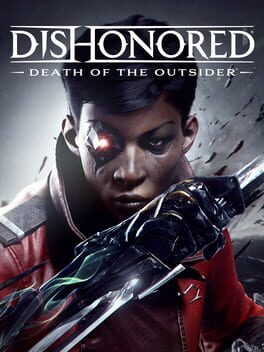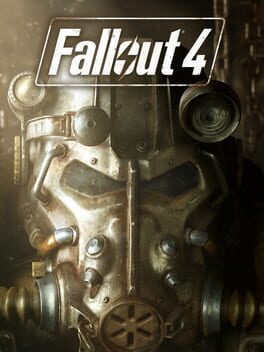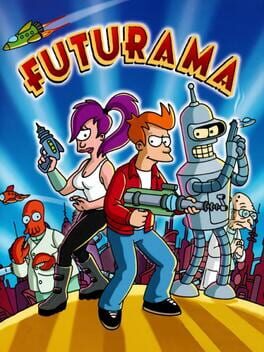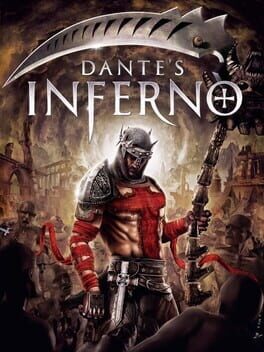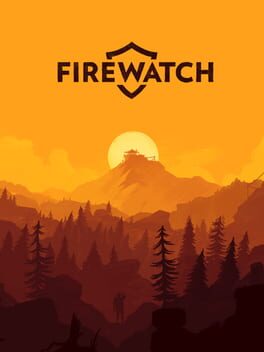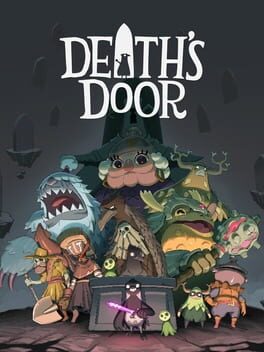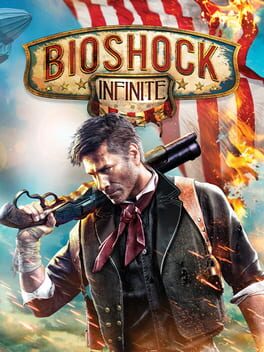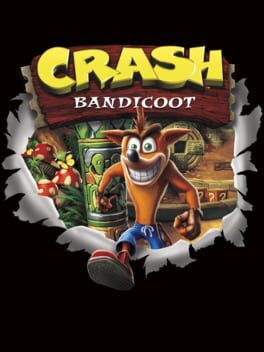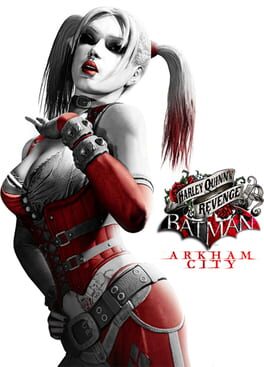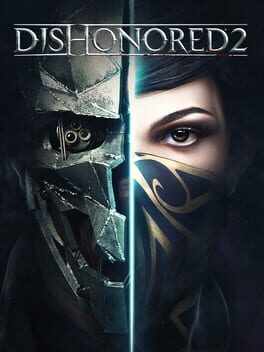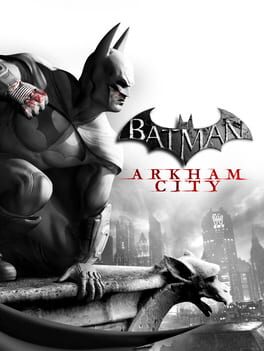EuphoriaGremlin
A gritty end to the Dishonored franchise, Death of the Outsider places us in the shoes of recurring series character Billie Lurk. Once an assassin that ran with Daud and later a bitter broken woman who tried to make amends for her life by helping Emily reclaim her throne, now Billie finds herself summoned by the Outsider with a final quest: to kill him.
Much like other entries, Death of the Outsider is a stealth game, but it's probably more of a stealth game than the others if that makes sense. Its higher difficulty pushes players to be silent and deadly, and its powers support that. Unfortunately, sometimes that works against this game, and leads to frustrating stretches of game that can be ruined by taking a misstep, and enemies towards the end are especially annoying for this. I'm also left disappointed by the removal of the Chaos system entirely, here justified because Billie's not important enough to the wider Dishonored cosmos, but I fail to see how given her involvement with everything else. The ending is worth the ride, and some of the missions along the way are joyously creative, but it was definitely the least enjoyable Dishonored game.
Much like other entries, Death of the Outsider is a stealth game, but it's probably more of a stealth game than the others if that makes sense. Its higher difficulty pushes players to be silent and deadly, and its powers support that. Unfortunately, sometimes that works against this game, and leads to frustrating stretches of game that can be ruined by taking a misstep, and enemies towards the end are especially annoying for this. I'm also left disappointed by the removal of the Chaos system entirely, here justified because Billie's not important enough to the wider Dishonored cosmos, but I fail to see how given her involvement with everything else. The ending is worth the ride, and some of the missions along the way are joyously creative, but it was definitely the least enjoyable Dishonored game.
2015
If there's one thing you can unequivocally give Fallout 4, it's that its opening is fantastic. Beginning in your idyllic house as your character admires their newborn, you're suddenly whisked off to the nearby Vault the moment the bombs drop on Boston. Cryogenically frozen for centuries, you wake to find your partner murdered and your baby stolen, prompting you to burst out into the post-apocalyptic wasteland to search for him.
At least, in theory that's what happens. The problem with Fallout 4 is that it has a brilliant core idea for its story but then Bethesda remembered they wanted to make an open-world RPG and so once you're out of the Vault any impetus or narrative push goes out of the window and instead you're asked to believe that a grieving and angry parent in this situation would just blow off their quest to go play construction in the yard instead. As a narrative, Fallout 4 is surprisingly shaky.
It is at least an improvement as an FPS over Fallout 3, with far more robust gunplay and a solid customization and upgrade system that lets you make horrendously overpowered guns if you want to put the busywork in. Fallout 4 also pushes its creation aspect quite hard, with multiple points in the main quest expecting you to drop everything and help build towns. I'm sure this is great for some but I personally hated it; the interface is finicky and the constant poke to improve various ratings of your townships is tiring.
There are moments when Fallout 4 is good, I promise, but it all comes in the minute-to-minute gameplay. As a world to explore and plunder, the Commonwealth is gorgeous and fun but whenever you try to engage with it in any way other than that the experience starts to crumble.
At least, in theory that's what happens. The problem with Fallout 4 is that it has a brilliant core idea for its story but then Bethesda remembered they wanted to make an open-world RPG and so once you're out of the Vault any impetus or narrative push goes out of the window and instead you're asked to believe that a grieving and angry parent in this situation would just blow off their quest to go play construction in the yard instead. As a narrative, Fallout 4 is surprisingly shaky.
It is at least an improvement as an FPS over Fallout 3, with far more robust gunplay and a solid customization and upgrade system that lets you make horrendously overpowered guns if you want to put the busywork in. Fallout 4 also pushes its creation aspect quite hard, with multiple points in the main quest expecting you to drop everything and help build towns. I'm sure this is great for some but I personally hated it; the interface is finicky and the constant poke to improve various ratings of your townships is tiring.
There are moments when Fallout 4 is good, I promise, but it all comes in the minute-to-minute gameplay. As a world to explore and plunder, the Commonwealth is gorgeous and fun but whenever you try to engage with it in any way other than that the experience starts to crumble.
2003
An absolutely dreadful action-platformer that isn't even suitable for super-fans of the show, failing at representing the source material in any way worth playing.
Irritatingly, things start quite well as we come out of the first cutscene, in which Professor Farnsworth sells Planet Express to evil tycoon Mom giving her majority control over the Earth, and drop into a wonderfully recreated version of the Planet Express building. However, things go swiftly downhill (indeed, down-sewers) after that as we follow Fry, Bender, and Leela through a series of bland, ambling levels over the course of a woefully toothless plot.
The gameplay is a fairly tepid mix of basic platforming and generic action. Fry can wield guns so his levels have you wrestle with terrible lock-on and enemies that can hit you from a mile away, while Bender and Leela need to make do with artless melee combat. All three have to deal with hideously dull level design and dealing with an uncooperative camera.
Originally conceived as a potential end for the show, you can now experience the story of this game as an extra on DVDs (and I assume Disney+). Do that instead if you must.
Irritatingly, things start quite well as we come out of the first cutscene, in which Professor Farnsworth sells Planet Express to evil tycoon Mom giving her majority control over the Earth, and drop into a wonderfully recreated version of the Planet Express building. However, things go swiftly downhill (indeed, down-sewers) after that as we follow Fry, Bender, and Leela through a series of bland, ambling levels over the course of a woefully toothless plot.
The gameplay is a fairly tepid mix of basic platforming and generic action. Fry can wield guns so his levels have you wrestle with terrible lock-on and enemies that can hit you from a mile away, while Bender and Leela need to make do with artless melee combat. All three have to deal with hideously dull level design and dealing with an uncooperative camera.
Originally conceived as a potential end for the show, you can now experience the story of this game as an extra on DVDs (and I assume Disney+). Do that instead if you must.
2010
A shameless God of War clone, but not a bad one! Perhaps the loosest adaptation of anything ever, Dante's Inferno follows the titular Dante, here refigured not as an Italian poet but as a bloodthirsty crusader who kills Death, nicks his scythe, comes home to find the love of his life spirited away to Hell by the Devil and resolves to murder his way through Lucifer's house until he gets her back. It's a frankly insane premise, but remarkably it works! Each level of Hell is rendered in exquisitely grotesque detail, and the attack animations are fluid and brutal. Combat is simple but effective, with the same light-heavy attack format as God of War, but Dante can stuff experience points into two different paths, either to power up the evil power of his scythe or the holy power of his cross (which shoots lasers, you know, like real crucifixes don't). A truly unhinged game, but in the best way.
2016
A walking simulator - or more accurately a hiking simulator - in which players take on the role of Henry, a grieving chap who runs away from a turbulent family situation to take up a season as a firewatchman atop a tower in a national park in rural Wyoming. As you'd expect from the genre the big draw here is in the writing, which oscillates between heartbreaking tragedy and gut-wrenching melodrama before seguing into some surprisingly tense moments as the game reaches its climax.
In a lovely touch, players can opt for a less "gamey" experience by turning off standard open world fixtures like map markers and button prompts, relying instead on reading the landscape and their own map-and-compass skills to navigate the gorgeous wilderness of Shoshone. It's a brilliantly immersive way to play this particular type of game.
As far as walking sims go, Firewatch is one of the finer examples of just how far a smart developer can push an otherwise oft-maligned genre.
In a lovely touch, players can opt for a less "gamey" experience by turning off standard open world fixtures like map markers and button prompts, relying instead on reading the landscape and their own map-and-compass skills to navigate the gorgeous wilderness of Shoshone. It's a brilliantly immersive way to play this particular type of game.
As far as walking sims go, Firewatch is one of the finer examples of just how far a smart developer can push an otherwise oft-maligned genre.
A surprisingly good beat-em-up, Omega Factor follows the broad strokes of the plotline from the Astro Boy anime, a show about a young boy who dies and is then rebuilt as Astro, a nuclear-powered superhero robot. The spritework is pleasingly colourful, and the variety of challenges is genuinely fun! Each level follows a different arc from the show, and as you progress you grow Astro's Omega Factor, gaining upgrade points for his abilities. There's also a stunning twist halfway through the narrative that completely hit me by surprise, and is absolutely worth playing just to see it play out.
2021
The initial premise for Death's Door is fantastic. We play as a crow who works as a grim reaper but when one of the souls they intend to reap is nicked they follow the culprit and discover the titular Death's Door, a sealed portal that can only be opened by collecting the souls of 3 ancient creatures. Thus begins our adventure, which takes us across as beautifully bleak fantasy land. You spend a lot of time in solitude in this game, and it builds a wonderful sense of atmosphere.
Gameplay is a kind of Zelda-Soulslike fusion. Presented with an isometric view, you wander around and hack away at enemies, but the high difficulty and need to constantly retry bosses due to quick deaths can be offputting for some. There's a lot of joy to be found in simply exploring the world, but some of the collectibles amount to busywork. It's certainly still a charming game and one I find myself thinking about a lot.
Gameplay is a kind of Zelda-Soulslike fusion. Presented with an isometric view, you wander around and hack away at enemies, but the high difficulty and need to constantly retry bosses due to quick deaths can be offputting for some. There's a lot of joy to be found in simply exploring the world, but some of the collectibles amount to busywork. It's certainly still a charming game and one I find myself thinking about a lot.
A vast improvement over Tenkaichi 1, the sequel is far more deserving of your time. Once more we're presented with a behind-the-character camera view and a fully mobile set of fighters that can fly around an arena as we fight, but this time the ambition is far more realised. There's a huge roster of playable characters covering a vast swathe of Dragon Ball, Z, GT and the movies, there's a lot more work done to make fighters distinct from each other, and signature attacks are far better represented. In a wonderful new twist you can now bring a team of up to 5 fighters to a round, all of which can be freely switched between during combat, and many characters can now transform between different forms during a bout as well, so the Dragon Ball feeling is wonderfully captured. However, one mark against the game is a far too overlong campaign mode that takes accuracy a little too seriously at the expense of actually having fun.
2013
Whereas Bioshock took us underwater to the crumbling city of Rapture, Infinite takes us up into the skies to the floating sky-nation of Columbia. We are Booker DeWitt, a PI hired to find a young woman named Elizabeth and spirit her away from Columbia. One small problem presents itself: Columbia is a racist theocratic state that worships the USA's Founding Fathers as gods and is led by the autocratic Father Comstock, whose teachings label Booker as the antichrist and so what seems like every gun in Columbia winds up pointing at him. What follows is a bloody gunfight across the sky as Booker shoots his way through to Elizabeth and back out again.
Whereas the original Bioshock courted a tense, claustrophobic atmosphere, Infinite opts for a much more colourful, open and swashbuckling feel. A gadget called a Skyhook lets Booker zoom around the wide levels and gives a sense of rapid mobility to fighting, while a lot of the game's worldbuilding is focused on the juxtaposition of Columbia's twee all-American society and the grim subjugation on which that is built upon. It gets a bit pretentious towards the end, but by that point it's kind of earned it. While it is more of a straightforward FPS in some ways than its predecessors, Infinite is still a fun time that veers into some exciting science-fantasy territory.
Whereas the original Bioshock courted a tense, claustrophobic atmosphere, Infinite opts for a much more colourful, open and swashbuckling feel. A gadget called a Skyhook lets Booker zoom around the wide levels and gives a sense of rapid mobility to fighting, while a lot of the game's worldbuilding is focused on the juxtaposition of Columbia's twee all-American society and the grim subjugation on which that is built upon. It gets a bit pretentious towards the end, but by that point it's kind of earned it. While it is more of a straightforward FPS in some ways than its predecessors, Infinite is still a fun time that veers into some exciting science-fantasy territory.
We return once again to the role of Phoenix Wright for the conclusion of this trilogy. Where Justice For All floundered due to poor writing and some tedious cases, Trials and Tribulations is a masterful return to form. Trials and Tribulations features a wonderful through-line that uses flashbacks to Phoenix and Miles' earliest days as lawyers, and is heavily connected to characters like the now long-dead Mia Fey; the end result is a lengthy and twisting plotline that ties together across both past and present. Our main opponent across the stand is Godot, an effortlessly cool antagonist, but the real star here is the writing, which stands head and shoulders above either of the other 2 entries.
2017
The N-Sane remake of the original Crash Bandicoot. We play as the titular Crash, a genetically engineered bandicoot who takes on an adventure to defeat local mad scientist Neo Cortex from entirely industrialising his island paradise home. A somewhat unique take on 3D platforming, Crash has you run into or out of the screen as opposed to free movement or sidescrolling, although the latter also makes an appearance here. Despite the remake making some much-needed quality of life improvements, such as including an autosave rather than the original release's unforgivable save function, it still controls horribly and showcases plenty of examples of awful difficulty. Not worth your time, even in this form.
1986
Of the NES classics, and like many of them Castlevania is a bit of a struggle for the modern gamer. Not just because it's unrelentingly tough - although it is - but because it's a showcase of some the NES era's most frustrating ways of making a game hard. That said, it remains a game with amazing atmosphere; the visuals are outstanding and help construct the Hammer horror vibes brilliantly, and the music is stunning. I enjoyed Simon Belmont's quest (no not that one) a lot, but it's one I'd hesitate to recommend unless you've got the time and patience to deal with it.
Arkham City's only story DLC, Harley Quinn's Revenge functions as an epilogue to its parent game's story. Unfortunately despite the intriguing narrative questions posed by that game's ending Harley Quinn's Revenge does little to grab the player's interest. You alternate between playing as Batman and Tim Drake's Robin in a neat twist to the regular Arkham format, and Robin even has a few unique skills to call on such as a shield, and both get their own combat and predator sequences so the core experience is preserved at least. However, the locations you fight through are insipid and the actual encounters are dull.
2016
Set a decade and a half after Dishonored, the sequel follows Emily as Empress, aided by her Royal Protector and father, Corvo. However, the witch Delilah returns, turns one of them to stone and steals the throne. Knowing that she was aided by the Duke of Serkonos, our protagonist travels to the southern city of Karnaca to end the conspirators who plotted their downfall and win back the throne.
Dishonored 2's first main gimmick is that you can play as either Emily or Corvo, and it's more than a cosmetic touch. Both have unique sets of powers granted by the Outsider, so the way they can approach the levels is slightly different. Combat has been reworked to be both smoother and also you finally have nonlethal ways of engaging enemies head-on, and the Chaos system is now both less obtuse and more open, allowing for Low Chaos runs that see you clashing swords through the streets or stealthy murderous High Chaos runs. While it can't ever be as surprisingly good as the first game, the same high level of quality has been retained and improved.
Dishonored 2's first main gimmick is that you can play as either Emily or Corvo, and it's more than a cosmetic touch. Both have unique sets of powers granted by the Outsider, so the way they can approach the levels is slightly different. Combat has been reworked to be both smoother and also you finally have nonlethal ways of engaging enemies head-on, and the Chaos system is now both less obtuse and more open, allowing for Low Chaos runs that see you clashing swords through the streets or stealthy murderous High Chaos runs. While it can't ever be as surprisingly good as the first game, the same high level of quality has been retained and improved.
2011
How do you improve on Arkham Asylum? Tighten up the combat, add in a load of side quests, and inject a heavy dose of Batman: The Animated Series! Despite the disastrous events at Arkham Asylum, warden Quincy Sharp has somehow become Mayor of Gotham and he's decided to build a huge wall around a part of the city and dump every supervillain in there to let them hash things out without needing to spend money on pesky things like the police. Obviously he's also chucking in minor criminals and anyone he doesn't like as well, so Bruce Wayne finds himself within the formidable walls of Arkham City and so must don the cape and cowl to stop his Rogues' Gallery and put an end to the scheming of both Sharp and his right-hand man, Dr Hugo Strange. City represents a big improvement on almost every level from Asylum, especially mechanically. The combat has been fine-tuned to perfection, and Batman's belt of gadgets is now extra-extensive; the best addition here is the grappling hook which can now be used to launch you into massive glides of the open world of Arkham City. The spooky atmosphere of Asylum hasn't survived the upgrade however which is a big shame, but in its place is one of the coolest Batman experiences out there.
